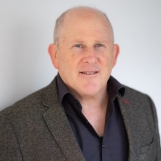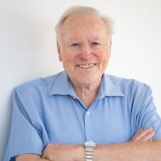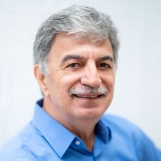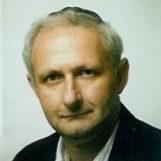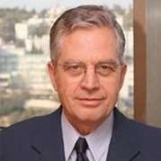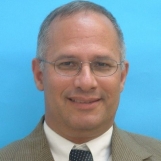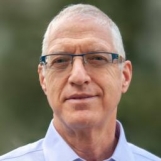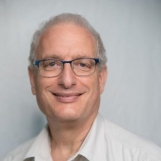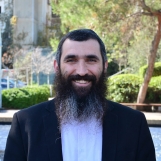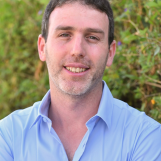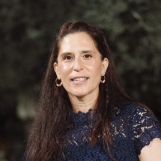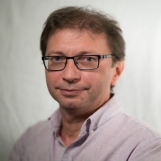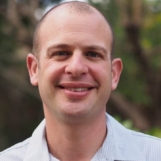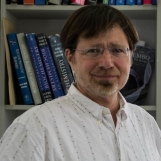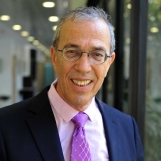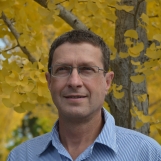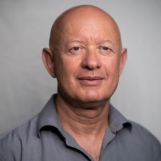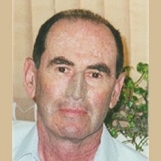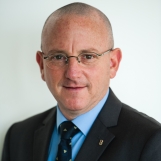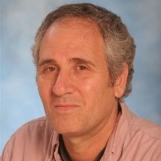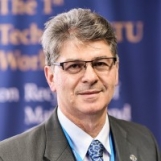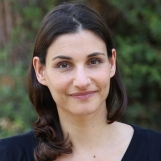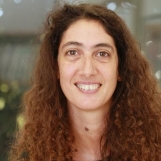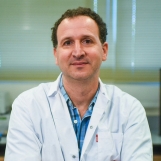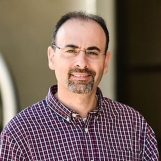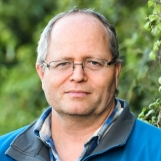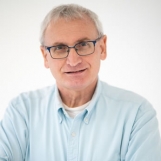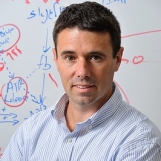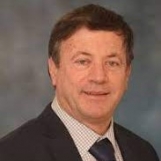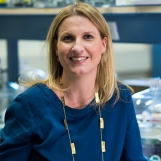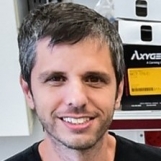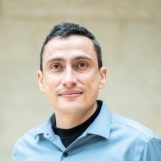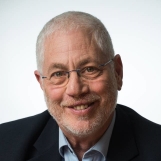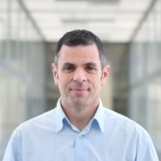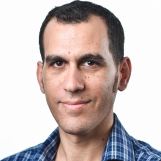2D semiconductors for quantum information processing
Quantum computers use materials which show quantum properties at very low temperatures. Maintaining these cryogenic temperatures requires a lot of energy, is costly and sizable. The discovery of graphene stimulated a surge for ultra-thin magnets, which included magnetically doped graphene,...
Categories:
Chemistry and Materials|Physics and Electro-Optics
3D Printed spacer fabrics (3DSF)
Knitted Spacer Fabrics (SF, AKA spacer mesh) have numerous uses in the fashion, automobile, safety industries, and more. Nevertheless, current SFs manufacturing suffers from some substantial limitations. The knitting machines are huge and very expensive, and the process requires a...
Categories:
Automation, Mobility and Aerospace|Chemistry and Materials|Information and Computer Science|Medical Devices
3D printing-based diffractive optical element fabrication
Diffractive Optical Elements (DOEs) are used to shape the wavefront of incident light in complex patterns, and are ubiquitous across optical applications, ranging from laser processing through lithography to communication and imaging. Example applications include beam splitters, beam shapers, optical...
Categories:
Chemistry and Materials|Physics and Electro-Optics
A bioink formulation for 3D printing of skeletal muscle
Over the past century, revolutionary techniques were developed allowing organ and tissue transplantation from human donors. Although such therapies have been extremely valuable and lifesaving, they are far from being sustainable on a global scale. Despite these shortcomings, allogeneic transplantations...
Categories:
Chemistry and Materials|Medical Devices
A new hydrothermal treatment of metal parts – experimental proof of concept
Metals might develop cracks and holes during the manufacturing process. 3D printing renders parts very prone to such defects. Other manufacturing methods may create such defects as well. Defects may also form while the parts are in use. This affects...
Categories:
Automation, Mobility and Aerospace|Chemistry and Materials
Activated carbon electrodes for heterogeneous electrocatalysis
In order to enhance the efficiency of electrocatalysis, carbon electrodes are coated with platinum (Pt) catalyst. However, the use of Pt, which is a costly rare metal, poses obstacles to the growth of markets such as hydrogen production in electrolyzers,...
Categories:
Chemistry and Materials|Sustainability and Energy
Adaptive robotic stone carving process and tools
Stone carving is done either manually for design of special features or using repeatable CNC process that does not allow unique design of each stone. Manual carving is a lost craft and it is very rare and expensive to apply...
Categories:
Chemistry and Materials
Additively manufactured turbine-based engines and ventilators
In the modern world, unmanned aerial vehicles (UAV) capture an ever-increasing part of our daily operations. This is especially true for small scale UAVs, which are commonly powered by micro-gas turbines. These micro jet engines have thrust rating below 1...
Categories:
Automation, Mobility and Aerospace|Chemistry and Materials|Medical Devices|Security & Defense
Adhesive composition reinforced with short fibers
Pancreatic surgery and specifically partial pancreaticoduodenectomy for malignant indication are generally accompanied by high complication and mortality rates. The poor results seen following the Whipple operation are mainly due to leakage from the pancreatoenteric anastomosis. Surgical sealants play a crucial...
Categories:
Chemistry and Materials|Medical Devices
Adsorption - absorption materials
Adsorbent/absorbent polymers are needed for the decontamination of water from organics and from metal ions. It is, however, difficult to incorporate high quantities of active adsorbents in monoliths. Highly porous emulsion-templated hydrophobic polymers, known as polyHIPEs since they are synthesized...
Categories:
Chemistry and Materials|Sustainability and Energy
Advanced thin-layer coating for superior UV resistance in polymers
Plastics are highly susceptible to UV radiation, leading to degradation, reduced lifespan, discoloration and frequent replacements. Traditional solutions, such as UV stabilizers, absorbers, antioxidants, and thick coatings, often come with limitations—altering mechanical properties, requiring chemical compatibility, or relying on heavily...
Categories:
Chemistry and Materials|Physics and Electro-Optics|Sustainability and Energy
Advanced, long term disinfectant polymers
Surfaces contaminated with viruses such as the Coronavirus may infect people touching them or facilitate their spreadability. On non-porous surfaces, the viable virus can be detected for days to weeks. Current small molecules-based disinfectants are effective in cleaning surfaces, but...
Categories:
Chemistry and Materials|COVID-19
All-angle electromagnetically transparent surfaces
Reflection off antenna radomes may distort the radiation pattern and reduce gain or bandwidth. Optical refraction may deform wavefronts of light and produce aberrant images. Remarkably, both wave reflection and refraction are inherently spatially dispersive, namely, they depend on the...
Categories:
Chemistry and Materials|Physics and Electro-Optics
Aluminum-air (Al-air) battery technology
The energy capacity of today batteries is a limitation in usage of all portable devices from cell phones to hearing aid devices. The possible current density for Al/Air battery is at the limit of 1.5mA/cm2. Additionally, initial potential drop at...
Categories:
Chemistry and Materials|Sustainability and Energy
Health care associated infections and deaths have reached dimensions that rival traditional diseases and have become a serious financial burden on the health-care systems. Such infections result from microbial contaminations by both bacteria and fungi. Moreover, microbial growth is also...
Categories:
Chemistry and Materials|Food and Agriculture
Bio-based, bio-degradable plastic
Much of the planet is swimming in discarded plastic. Plastic pollution has become one of the most pressing environmental issues, as rapidly increasing production of disposable plastic products overwhelms the world’s ability to deal with them. In order to handle...
Categories:
Chemistry and Materials|Food and Agriculture|Sustainability and Energy
Bio-clays composites for formaldehyde remediation
In the production process of formaldehyde-based resins, acidic wastewater rich with formaldehyde is produced (3000-10,000 ppm). Due to the carcinogenic nature of formaldehyde, such wastewaters need to be treated prior to release from the industrial plants. Bioremediation is a favorable solution,...
Categories:
Chemistry and Materials
Bio-fabrication of nanocellulose-mycelium hybrid materials
Fibrous network of mycelium - the vegetative part of fungi - is employed to produce sustainable alternatives for synthetic foams. Clear correlation between fungi, substrate, mold properties, and incubation conditions on final material characteristics, is used to control material density,...
Categories:
Chemistry and Materials|Sustainability and Energy
Bio-inspired route for toughing ceramics
In contrast to synthetic materials, materials produced by organisms are formed in ambient conditions and with a limited selection of elements. Nevertheless, living organisms reveal elegant strategies for achieving specific functions, ranging from skeletal support to mastication, from sensors and...
Categories:
Chemistry and Materials
Bioplastic eco-friendly films
Plastics are known to be one of the most urgent problems in the world due to its increase use in different applications such as food, house holding, construction etc. Today some of the plastics can be recycled while some cannot. In...
Categories:
Chemistry and Materials|Food and Agriculture|Sustainability and Energy
Brackish-water desalination using mineral-selective membrane
Reverse osmosis and nanofiltration membranes used for desalination typically remove most or all minerals from water, including beneficial ones like calcium and magnesium. While eliminating sodium chloride is essential, some of these filtered-out minerals are vital for health. The proposed...
Categories:
Chemistry and Materials|Food and Agriculture|Sustainability and Energy
Carbon-based electrodes for fuel cells and electrolyzers
Hydrogen fuel cells are a key enabling technology towards supplant CO2-emitting fuels with hydrogen. Proton Exchange Membrane (PEM-FC) technology is the dominant incumbent for automotive applications. However, PEM-FCs suffer from a strong drawback in the cost of the fuel cell...
Categories:
Chemistry and Materials|Sustainability and Energy
Catalytic Systems for Enantio-Selective Enrichment
Chirality is an unusual aspect of chemistry, a seemingly minor detail with surprisingly far-reaching consequences in physical, chemical, and biological systems. Approximately 50% of drugs on the market today contain at least one chiral center. Many of these compounds exhibit...
Categories:
Chemistry and Materials|Pharmaceuticals and Biotechnology
Cathodic electrophoretic deposition of barium titanate layers from aqueous suspension
Barium titanate (BaTiO3) is one of the most important ceramic materials used in electronics. As an intrinsic ferroelectric material it can be utilized for various applications like multilayer capacitors, grain boundary capacitors, low-temperature sensors and thermistors. There is a growing...
Categories:
Chemistry and Materials|Sustainability and Energy
Now adays, multifunctional sensors are required in every sphere of life. In fact, sensors and detectors are becoming essential part from human physiological monitoring to Mars exploration. However, it is not always beneficial to use olfactory sensors in wearable devices...
Categories:
Chemistry and Materials
Conversion of carboxylic acids to organic halides
Novel technology for the direct production of valuable organic compounds containing bromine, iodine and chlorine functions from widely available and inexpensive carboxylic acid precursors. The new method allows to prepare a wide scope of halides including aliphatic (primary, secondary and...
Categories:
Chemistry and Materials
Conversion of Cellulose Biomass into Electrical Power Using Cellulase Enzyme
Conversion of biomass to electric power is an attractive strategy for the generation of green and efficient energy. As Cellulose is one of the most abound polymers on earth, ~70% of the plant biomass is cellulose, which makes him an...
Categories:
Chemistry and Materials|Sustainability and Energy
Crystals for compounds entrapment and slow release
Drug delivery with slow release systems main limitation is control over the dissolution rate of the encapsulating material as well as leaching of the active material from the encapsulation. Bio-inspired approach in which drugs are entrapped within a crystalline lattice...
Categories:
Chemistry and Materials|Pharmaceuticals and Biotechnology
Delamination of multilayers films and packages
Currently multilayer laminate films such as food packaging and solar panels can be incinerated but are usually not recycled. The laminate must be broken first in order to allow recycling of each base material separately. A new method to chemically...
Categories:
Automation, Mobility and Aerospace|Chemistry and Materials|Food and Agriculture|Sustainability and Energy
Developing improved yeast for biofuel production
Creating alternative energy sources through large-scale industrial fermentation of renewable biomass is a major goal for the sustainable development of human society. High oil prices, energy security issues, and environmental goals all necessitate intense focus on making alternative energy an...
Categories:
Chemistry and Materials
Diamond electronics and oxygen sensor
Current oxygen sensors required for in-situ oxygen monitoring inside a process chamber in semiconductor manufacturing processes (such as ALD, epi CVD and PVD) are limited in operating pressure and temperature ranges. Transition metal oxides are highly sensitive to gases environment....
Categories:
Chemistry and Materials
Diamond film deposition on WC-Co
Adhesion of diamond coatings to cutting tool substrates is an important property in machine tool applications. Strong bonding of the diamond to the substrate is required to overcome thermal expansion coefficient and composition mismatch to promote the coating endurance in the...
Categories:
Chemistry and Materials
While biological systems are inherently fuzzy and contain imprecise parts that collectively interact, synthetic computation in living cells is mostly inspired by precise computer engineering principles. Lab research demonstrated that neuromorphic synthetic genetic circuits can be engineered in living cells,...
Categories:
Chemistry and Materials|Information and Computer Science
Edge-state based actuation in ferroelectric field effect transistors
One of the holy grails for the microelectronic industry is to continue device miniaturization in order to increase the operation speed of the device (clock speed) and to pack more devices to reduce the fabrication cost. Therefore, many efforts are...
Categories:
Chemistry and Materials|Information and Computer Science|Physics and Electro-Optics
Efficient biodiesel production using cellulose microcapsules
Biodiesel is typically made by chemically reacting lipids such as animal fat, soybean oil or some other vegetable oil with an alcohol. This process requires, other than oil and alcohol also enzymes. In order to produce alcohol one can use...
Categories:
Chemistry and Materials|Sustainability and Energy
A family of continuous porous polymers, generally known as polyHIPEs, have been synthesized using high internal phase emulsions (HIPEs) as templates for the porous structure. This composition-of-matter having microscopic closed-cell capsules (either hydrophobic and hydrophilic) can be utilized for various...
Categories:
Chemistry and Materials|Food and Agriculture|Sustainability and Energy
Encapsulation of beta-casein assemblies for enrichment of foods, beverages and soft drinks
Solutions aimed at incorporating nutraceuticals and other additives in foods and beverages, particularly clear ones, at the nano-scale, are scarce. Incorporating additives into foods and beverages is still a major challenge in creating advanced functional foods. The challenges are especially...
Categories:
Chemistry and Materials|Food and Agriculture
Enhancing conductivity and reactivity in electro-catalytic materials
Electrode quality for electrochemical conversion needs material improvement and design. For instance, conversion efficiencies of photoelectrochemical cells used for water splitting reaction are limited by the intrinsic material properties of the electrode. The electrode should be a good conductor, a...
Categories:
Chemistry and Materials|Sustainability and Energy
Facile catalysis by iron complex
A fast, cheap, and eco-friendly method for catalysis of several types of reactions: Hydrogen Isotope Exchange, Alkene Isomerization, Z-Selective Alkyne functionalization, Cross-Coupling, Hydrogenation and C-H activation. In particular, the Hydrogen isotope exchange technology is based on an iron complex, that...
Categories:
Chemistry and Materials|Pharmaceuticals and Biotechnology
Fibrin matrix for engineering tissue substitutes with internal blood vessel network
Tissue engineering holds enormous potential to replace or restore the function of damaged tissues. However, the most successful applications have been limited to thin avascular tissues such as skin and cartilage in which delivery of nutrients and oxygen relies on...
Categories:
Chemistry and Materials|Pharmaceuticals and Biotechnology
Fire retardant glass based on intumescent layer technology deposited using a cast in place method
Intumescent gel trapped between 2 glass sheets will create a fire-resistant and heat insulating windows. Using in-place casting of the gel layer and its chemical hardening between 2 glass sheets prevents air bubbles that exist in other filling methods. When...
Categories:
Chemistry and Materials|Security & Defense
Fluidic Shaping of ocular lenses
Researcher:
Prof. Moran Bercovici
Various methods are being used for lenses fabrication, however these are effective usually for large-scale fabrication, where the cost and time spent on the initial mold is justified. Another method is depositing a finite volume of a liquid (e.g. polymer...
Categories:
Chemistry and Materials|Physics and Electro-Optics
Green corrosion resistant conductive coatings for magnesium alloys
Conductive coatings are of great importance for applications including dissimilar metals joining which needs continuous electrical conductivity as part of design considerations. Magnesium has galvanic corrosion with any other metal. Therefore, it's impossible to use metallic layers on magnesium as conductive...
Categories:
Automation, Mobility and Aerospace|Chemistry and Materials
H2 production by electrocatalysis assisted by Peptoid complex
Water splitting is an important process towards the generation of H2 as a renewable and sustainable energy source; however, the high overpotential and slow kinetics limit its applicability. Most current photo- and electro-catalysts are expensive to make, not environmentally friendly...
Categories:
Automation, Mobility and Aerospace|Chemistry and Materials|Sustainability and Energy
High potential cathodes for thermal lithium batteries
Thermal batteries have long shelf-life, short service life and high capacity. They are very reliable. Increasing energy density will allow reducing volume of the batteries. This can be achieved by increase of discharge potential of the batteries via increase in...
Categories:
Chemistry and Materials|Sustainability and Energy
Highly porous degradable polymers for biomedical applications
Highly porous emulsion-templated polymers, known as polyHIPEs since they are synthesized in high internal phase emulsions (HIPEs), are of interest for biomedical applications such as tissue engineering (see electron microscope image). Poly(lactic acid) (PLA) is a renewable-resource polymer that undergoes...
Categories:
Chemistry and Materials|Food and Agriculture
Highly stable membranes for alkaline fuel cells and electrolysers
Alkaline fuel cells and electrolyzers offer many advantages over their acidic counterparts, the main one being the possibility to replace precious metals in electrodes with other, low cost and abundant metals. However, the alkaline environment leads to substantial electrolyte decomposition...
Categories:
Automation, Mobility and Aerospace|Chemistry and Materials|Sustainability and Energy
Hydrogel Microparticles fabrication system
Hydrogel microparticles (HMPs) are composed of 3D crosslinked polymers on a microscopic scale. Due to their special material properties, they have become an important class of pharmaceutical formulations in the biotechnology and biomedical field. Current methods to produce HMPs such...
Categories:
Chemistry and Materials|Medical Devices|Pharmaceuticals and Biotechnology
MWIR technology can be used for fluorescent marking of objects such as money bills, military equipment, landing strips etc. However, it is based on bulk toxic materials and the devices based on them are noisy and require harsh and hazardous...
Categories:
Chemistry and Materials|Physics and Electro-Optics
Laser multiphoton charge separation spectroscopy (MEES)
A novel analytical technology, MEES (Multiphoton Electron Extraction Spectroscopy), has been developed for sensitive compound detection and quantification under ambient conditions. In this method the sample is irradiated by a laser and the photocurrents are measured as a function of...
Categories:
Chemistry and Materials
Lithium-ion battery (LIB) is the most widely used energy storage device for portable consumer electronic devices, electric vehicles, and electric grids. Additionally, LIBs have become emerging devices to store renewable energy (i.e., wind, solar, geothermal). Due to the widespread use...
Categories:
Automation, Mobility and Aerospace|Chemistry and Materials
Lightweight avionic parts such as wings and even aircraft body as well as high specific strength parts for seacrafts, automotive, wind turbine and other parts with demanding mechanical requirements are usually made of a laminate of skin which may be...
Categories:
Automation, Mobility and Aerospace|Chemistry and Materials
Low dimensional perovskites nanostructures
Lead halide perovskite nanocrystals have shown high photoluminescence quantum yields, even without growing inorganic shells that protect their surfaces from deleterious surface traps. These observations present an important departure from traditional semiconductor nanocrystals that require passivating surface defects to achieve...
Categories:
Chemistry and Materials|Physics and Electro-Optics
Low temperature self-assembled nanostructures
Antireflective coatings are critical to many optical systems such as ophthalmic lenses. It is well known that creating textured nanostructures can be an alternative approach for the conventional deposition of thin layer in order to achieve broadband antireflective properties. The...
Categories:
Chemistry and Materials|Physics and Electro-Optics
Mechanochemical recycling of plastic mixtures for injection molding
Plastic recycling has many challenges, most of which are a consequence of the huge variability of materials in the recovered plastic. While separation between different types of plastics can be somewhat addressed by separation, even if 100% of the same...
Categories:
Chemistry and Materials|Sustainability and Energy
Microstructure control of ceramic matrix nanocomposites
Ceramic matrix nanocomposites have interesting advantages over their monolithic counterparts. These composites are based on a micron-sized ceramic matrix reinforced with metal or ceramic sub-micron or nanometer-sized particles as a second phase. One of the main goals of reinforcing the...
Categories:
Automation, Mobility and Aerospace|Chemistry and Materials
Mixed metal electrode for ambipolar charge injection
Ambipolar transistors can transport holes and electrons, separately or concurrently, within the semiconducting channel. The operation of the device requires that the semiconducting material composing the device is capable of efficiently transporting both charge carriers, and the suitable alignment of...
Categories:
Chemistry and Materials|Physics and Electro-Optics
Mold-less molding additive manufacturing of volumetric objects
Traditional additive manufacturing methods such as 3D / 4D printing, Selective laser sintering (SLS), Stereolithography (SLA), Digital light process (DLP) and Volumetric additive manufacturing (VAM) are powerful tools for prototyping, but they’re limited by slow build speed and inhomogeneous mechanical...
Categories:
Automation, Mobility and Aerospace|Chemistry and Materials|Medical Devices|Sustainability and Energy
Motion conversion mechanisms
In micro devices, built from a single layer (i.e. wafer fabrication) an in-plane force is easy to implement but an out-of-plane motion is hard to achieve and requires custom fabrication each unit using FIB and complex assemblies or actuators which...
Categories:
Chemistry and Materials
Multispectral imaging device with no moving parts
Multispectral and spectral imaging is used to collect spatially and spectrally resolved radiance information of a predefined region of space. Devices for imaging are built per specific application, resolution and wavelength requirements. Each image pixel contains spectroscopic data. All the...
Categories:
Chemistry and Materials|Physics and Electro-Optics
Nano gate - stimulus induced nanofluidic device
Flow control that is activated by environmental and other pre-designed parameters can be useful in many systems such as agriculture and water treatment. Natural tendency of two-dimensional (2D) clay nano-particles to self-assemble and restrict water permeability in soils can be...
Categories:
Chemistry and Materials|Food and Agriculture|Pharmaceuticals and Biotechnology|Sustainability and Energy
Near-field imaging devices
Achieving better resolution in microscopy, metrology and lithography is an on going effort that could be realized by either using smaller wavelength illumination sources which is proved to be difficult for technical and economical reasons or using super-resolution - resolving...
Categories:
Chemistry and Materials|Physics and Electro-Optics
Non-invasive imaging of metabolites by MRI
The new technology developed at the Technion can hyperpolarize metabolites with stables radicals created in their solid form, without the need to co-dissolve them with potentially toxic exogenous radicals, Magnetic Resonance Imaging (MRI) is the most informative of all medical...
Categories:
Chemistry and Materials|Medical Devices
Novel mucoadhesive nanoparticles for Cannabinoids delivery to the eye
Topical, systemic, and/or injected corticosteroids are currently the best and most common options available for the treatment of ocular inflammation (uveitis). However, these treatments often cause mild to severe side effects. Cannabidiol (CBD) and other lipophilic cannabinoid molecules have been...
Categories:
Chemistry and Materials
Novel peptides for targeting ubiquitin chains
A promising approach in cancer therapy is to find ligands that directly bind ubiquitin (Ub) chains. However, finding molecules capable of tightly and specifically binding Ub chain is challenging given the range of Ub polymer lengths and linkages and their...
Categories:
Chemistry and Materials
Novel Protein-Based Aerogels
Aerogels are like hydrogels in which the liquids have been replaced by a gas. Recently, natural protein-based aerogels found to be very interesting in the biomedical and biomaterial fields due to their biocompatibility and degradability. Current approaches still use harsh...
Categories:
Chemistry and Materials|Pharmaceuticals and Biotechnology|Sustainability and Energy
Novel superconducting materials and devices
The recent demand for quantum technologies garnered much attention for novel superconducting materials and devices. Many of these technologies require coating in superconducting materials, while others involve miniaturized devices. Hence, modern superconducting technologies are based vastly on thin films. Thin...
Categories:
Chemistry and Materials
Novel treatment for diseases requiring long-term repression of gonadal steroids
There is a need to repress production of steroids by the gonads (testes and ovaries) in various “steroid-dependent” diseases, most notably breast and prostate cancers, and uterine fibroids and endometriosis. Current treatments rely on GnRH agonists which shut-down the reproductive...
Categories:
Chemistry and Materials|Pharmaceuticals and Biotechnology
Organic semiconductors p-dopants
Organic solar cells represent a promising advancement in solar technology, having recently achieved a significant improvement in photo-conversion efficiency from approximately 10% to 17%, with a projected maximum efficiency slightly surpassing 20%. Overcoming challenges in extracting carriers from the active...
Categories:
Chemistry and Materials|Physics and Electro-Optics|Sustainability and Energy
PFAS free process for highly functionalized fluoropolymers
Due to their remarkable chemical and physical properties, fluoropolymers find extensive application across diverse industries including chemical, electronic, construction, mechanical, architectural, and automotive, among others.. These unique properties include chemical resistance, weather and thermal stability, inertness to solvents, low dielectric...
Categories:
Chemistry and Materials
Polymer-conjugated albumin hydrogels for controlled release of therapeutic agents
One of the known functions of serum albumin is the binding and transport of various molecules in the blood circulation, including fatty acids, bilirubin, hormones, metal ions and other endogenous and exogenous compounds with widely differing properties. Among other substances,...
Categories:
Chemistry and Materials
Polymers to trap uremic toxins in WAK (Wearable artificial kidney)
Renal failure is a medical condition in which the kidneys fail to function adequately. The treatment given to patients suffering from renal failure are dialysis or kidney transplant. Different studies done in recent years, indicate that frequent and prolonged dialysis...
Categories:
Chemistry and Materials|Medical Devices
Post-functionalization mechanophores via Click Chemistry
The autonomous detection of mechanical stress in plastics and polymers (both biological/natural and synthetic) traditionally requires the incorporation of mechanophores (force-sensitive molecular probes) during the chemical step - polymerization, and therefore does not allow for incorporation after processing. In addition,...
Categories:
Automation, Mobility and Aerospace|Chemistry and Materials|Pharmaceuticals and Biotechnology
Protection layer for battery electrodes
In Li-ion batteries electrode materials degrade through their reactive interface with the electrolyte. The undesirable interfacial reactions result in formation of layers that impede charge transfer and can serve as an active site for electrolytic consumption, electrode corrosion and passivation,...
Categories:
Automation, Mobility and Aerospace|Chemistry and Materials|Sustainability and Energy
Protein-based polymers as the active layer in electronic devices
Using sustainable and affordable proteins as the basis for the formation of a new family of environmental polymers that are free-standing, soft, elastic, and most importantly, their electronic and ionic conductivity can be engineered. A special focus is given to...
Categories:
Chemistry and Materials|Medical Devices|Sustainability and Energy
Fuel cells require very clean hydrogen for proper operation. Hydrogen transportation poses several logistics and safety issues. The solution might be – on board clean hydrogen production using a very efficient autothermal system. The system produces clean hydrogen by steam...
Categories:
Chemistry and Materials|Sustainability and Energy
Rapid clinical antimicrobial susceptibility diagnostic system
Technology By the year 2050, antimicrobial resistance is predicted to cost the world over 100 trillion US$ cumulatively and claim 10 million lives per year. Thus, there is an urgent need to develop diagnostic methods that will help physicians to...
Categories:
Chemistry and Materials|Food and Agriculture|Medical Devices|Physics and Electro-Optics
Recycled, 3D printed wood products for the construction industry
The construction industry is one of the most polluting industries, mostly due to concrete and plastic usage. To reduce construction related pollution and waste, one of the possible solutions is to increase the use of Recycled Wood & Polymer Materials...
Categories:
Automation, Mobility and Aerospace|Chemistry and Materials|Sustainability and Energy
Phosphogypsum is a product of manufacturing of phosphoric acid from phosphate rock. It contains radioactive impurities and chemical impurities which deteriorate the gypsum quality. Huge quantities of phosphogypsum is piling next to quarries. Some process exists to clean the phosphogypsum...
Categories:
Chemistry and Materials|Sustainability and Energy
Redesign of Fluoroquinolones to Catalytically Fragment Chromosomal DNA
Fluoroquinolones are highly potent, broad spectrum antibiotics that are among the most prescribed antibacterial in the world. They exert a bacteriostatic effect by selectively binding to the bacterial topoisomerase IIA− DNA complex and thereby inhibiting DNA replication. At higher doses...
Categories:
Chemistry and Materials|Pharmaceuticals and Biotechnology
Rotational casting of inorganic cement architectural components
Façade tiles and aesthetics components with complex geometries are currently difficult to fabricate and require cement or mechanical parts such as bolts for connections. Inorganic cementitious tiles are relatively weak and absorb water. Manufacturing such architectural elements from polymers and...
Categories:
Chemistry and Materials|Sustainability and Energy
Selective terminal functionalization of Alkanes
Methods for selective functionalization of various alkanes and other aliphatic derivatives are usually highly energy-consuming processes (high temperatures and pressures, e.g. alkane cracking) or using expensive noble transition metal catalysts. They are also not general processes and are also low...
Categories:
Chemistry and Materials
Self-Healing Multifunctional Wound Dressing
Traditional wound closure methods, including sutures, staples, and medical adhesives, have been widely used in the medical field. However, these methods often lead to complications due to mechanical mismatches with the skin's natural properties. These complications may include infection, damage...
Categories:
Chemistry and Materials|Medical Devices|Pharmaceuticals and Biotechnology
Self-sterilized polymers for coatings and printing
Researcher:
Prof. Yoav Eichen
Low migration, low odor UV curable polymer compositions designed to passively self-sterilize in an accelerated process, without any need for human intervention The polymers are amenable to coating, 2D- as well as 3D-printing Irreversible immobilization onto the surface and accelerated...
Categories:
Chemistry and Materials|COVID-19
Sensitive sensors for new nanoparticle resonance biomedical applications
Optical interrogation of targets enables a non-destructive way by which to extract useful information on critical target parameters. Such methods predominantly employ either angular or spectral interrogation, in which the target is illuminated at different incidence angles or wavelengths, respectively....
Categories:
Chemistry and Materials|Physics and Electro-Optics
Separation and concentration of oxygen
Separation of oxygen from ambient air is currently done using cryogenic and sorption processes. Although the present technology is very common and currently most of the oxygen is being produced using these methods, cryogenic and sorption processes are high energy...
Categories:
Chemistry and Materials|Medical Devices
Separation of ions from water and wastewater
Purification of water or waste water from nitrates and other ions can be done using ion exchange and other processes which consume large amounts of salts, acids or bases and produce highly concentrated brines that are difficult to treat. In...
Categories:
Chemistry and Materials|Sustainability and Energy
A lightweight material which can undergo significant reversible and reproducible changes in its dimensions upon the application of temperature as a stimulus. The technology is based on a shape memory porous polymers synthesized using Pickering high internal phase emulsions (HIPEs)....
Categories:
Chemistry and Materials
Shockwave protection layer
Abnormal inverse-freezing phenomena, in which fluids solidify upon heating. It was shown that upon impact, some of these inverse-freezing fluids undergo solidification by absorbing impact energy. This novel phase transformation, which occurs in timescales of microseconds, is in stark contrast...
Categories:
Automation, Mobility and Aerospace|Chemistry and Materials|Security & Defense
Metal air battery based on Si anode using highly doped and metalized Silicon. The high dopants concentration increases Si wafers conductivity. The battery has undetectable self-discharge rate Advantages High density energy source High tolerance to relative humidity Infinite shelf life...
Categories:
Chemistry and Materials|Sustainability and Energy
Single input multiplexed decision system
Many applications of genetic or metabolic engineering require inducible expression of the desired pathway. Inducible promoters are one of the easiest and most effective ways to control gene expression. However, in a more sophisticated applications there is a need to...
Categories:
Chemistry and Materials|Information and Computer Science
Single-photon quantum dot sources embedded in polymeric waveguides
Known single photon sources are hard to make and demands high vacuum and high temperatures. As such their production costs are extremally high. Moreover they need to be placed or fabricated on top of a photonic waveguiding structure. A novel...
Categories:
Chemistry and Materials|Physics and Electro-Optics
Skin-like sensing platform
Skin-like sensing platform for a full physical and chemical perception of the surrounding space - platform unit for detecting VOCs, temperature, pH, pressure and strain. The patches are based on sensor technology and self-healing and self repair polymeric substrate, electrodes...
Categories:
Chemistry and Materials|Medical Devices
While chemical compounds are essential to many aspects of our lives and provide key solutions, they may also create environmental and health challenges. Chemical mixture might have an increased effect on health and environment. Main inspection method is spectrometry and...
Categories:
Chemistry and Materials|Sustainability and Energy
Sono-dynamic nanoparticles for treatment of cancer
Sono-dynamic therapy (SDT) is anti-cancer therapy that utilizes deep tissue-penetrating therapeutic ultrasound (US) waves to activate a sonosensitizer, thereby locally generating reactive oxygen species (ROS) in the tumor microenvironment and triggering cancer cell apoptosis. SDT is localized and minimizes side...
Categories:
Chemistry and Materials
Spatial light modulation based on a fluidically actuated elastic sheet
Researcher:
Prof. Moran Bercovici
Spatial light modulator (SLM) is a general term describing devices that are used to modulate amplitude, phase, or polarization of light waves in space and time. Manipulating all these light properties enables generation of beams with required properties and finds...
Categories:
Chemistry and Materials
Sub-10 nm monolithic ferroelectric-semiconductor junction
Selective illumination using a scanning laser probe, is used to convert In2Se3 to In2O3, and achieved spatially resolved distinct optical and electrical properties. The method is used to design of coplanar P/N ferroelectric – semiconducting heterojunction. In addition, In2Se3 can...
Categories:
Chemistry and Materials|Physics and Electro-Optics
Super-resolution optical microscopy utilizing structured illumination
Standard optical microscopy has a resolution limit of roughly 200nm which is insufficient for modern Biological research. Research of intra-cellular structures requires sub 50nm resolution for dynamic in-vivo studies. Current methods to achieve such resolution are slow or destructive. Illuminating...
Categories:
Chemistry and Materials|Pharmaceuticals and Biotechnology|Physics and Electro-Optics
Superoleophobic and superhydrophobic surfaces
Employment of a bio-inspired approach in which one component will serve both as the roughness and the hydrophobic surface chemistry elements. Use of various fatty acids as a main component of a superhydrophobic coating for a wide range of substrates....
Categories:
Chemistry and Materials|COVID-19
Superradiance cathodoluminescence electron microscope
Superfluorescence (or superradiance) refers to the emission of a collective burst of photons from densely packed emitters with long coherence times and narrow energy spectra. This phenomenon arises when emitters are coupled and correlated through the electromagnetic field. However, it...
Categories:
Chemistry and Materials|Medical Devices|Pharmaceuticals and Biotechnology
Synthetic living medicine for gut inflammation (Crohn’s disease) diagnosis and treatment
By combining advanced synthetic biology and microbiome engineering, this technology harnesses genetically modified bacteria to both diagnose and treat gut inflammation, such as Crohn’s disease and ulcerative colitis. These engineered bacteria are designed to detect specific biomarkers of inflammation (e.g.,...
Categories:
Chemistry and Materials|Information and Computer Science
Thermally stable nano-porous gold
Novel methods to form thermally stable gold particles. The particles are made either from nano-porous gold (np-Gold) – sponge-like single crystals with intricate morphology or thin polycrystalline gold atomic steps. The catalytic activity is akin to that of Au nanoparticles...
Categories:
Automation, Mobility and Aerospace|Chemistry and Materials
Translator detectors and NIR light amplification based on metal lattice field
Current IR sensors are based on small band gap materials require cryogenic cooling and usually have low quantum yield, hence are expensive and hard to use. Photonic crystals containing nano particles can transform IR radiation into visible light that is...
Categories:
Chemistry and Materials|Physics and Electro-Optics
Transparent and lightweight ballistic protection
Transparent armor is essentially based on the performance of the component materials, and their stacking. Beyond that point, it is commonly believed that little can be added to the system to improve its performance. High confinement pressure over the glass...
Categories:
Chemistry and Materials|Security & Defense
Vertical transistors for display applications
In the field of organic electronics there is a need for high mobility materials. The best mobility is achieved in organic crystals however, these are typically too small even on the scale of a single device let alone for producing...
Categories:
Chemistry and Materials|Physics and Electro-Optics
Viscosity modifiers for oils and lubricants
Oils and lubricants are crucial to the reduction of erosion and energy loss in systems that include moving surfaces. Two basic requirements for these materials are high viscosity, for surface adherence; and viscosity-temperature response, which is achieved by adding polymers...
Categories:
Automation, Mobility and Aerospace|Chemistry and Materials
Water desalination - selective removal of specific Ions
Selective water treatment, which removes more problematic ions preferentially over others, is an important goal towards next generation, energy efficient water treatment systems. Current treatment techniques rely on chemical sedimentation or membrane separation, the latter of which is used in...
Categories:
Chemistry and Materials|Sustainability and Energy
Water purification by forward osmosis
A new separation unit for FO comprising of 2 separation columns which are filled with a stimulus water-absorbing polymer gel. The gel is thermo-sensitive with lower critical solution temperature. This material absorbs water below critical temperature Thyd and release water...
Categories:
Chemistry and Materials|Sustainability and Energy
Wearable stretchable microneedles-based platform
Microneedles devices to monitor materials in the interstitial fluid or inject materials to it are widely used for a range of medical conditions. Those are hollow microneedles as they need to pass fluids from and to the body. As such...
Categories:
Chemistry and Materials|Medical Devices


